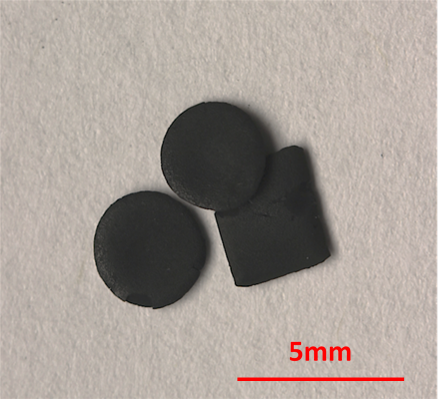High performing, rare earth, permanent magnets are used in motors, generators and high value items. Their manufacture typically starts with a powder source particle material such as Nd2Fe14B, Sm2Co17, or ferrites. The powders are pressed into shapes and then sintered to fuse the particles together. This manufacturing method limits the design space for these items. More flexibility in manufacturing is desired to give more geometric and material design options, to use different magnetic materials in one item, improve mechanical properties, and reduce waste.
LLNL uses the additive manufacturing technique known as Electrophoretic Deposition to shape the source particle material into a finished magnet geometry. The source particle material is dispersed in a liquid so that the particles can move freely. Electric fields in the shape of the finished product then draw the particles to the desired location to form a “green body”, much like an unfired ceramic clay body. The green body is then sintered in an appropriate atmosphere to form a durable finished magnetic shape. That shape can then be magnetized to complete the process. The advantage in this method is two-fold from a design point of view. First there is a great deal of spatial geometric design flexibility, and second multiple materials can be used at different locations or as gradients in a given design. This approach is especially attractive for thin magnets and/or those with complex contours.
The detailed design flexibility offered by Electrophoretic Deposition in the manufacture of permanent magnet systems is significant. Permanent magnets with unique properties never before achieved are now possible. Also, because there is no material to be removed in the manufacture of these magnets, expensive waste is virtually eliminated while (near) net-shape production eliminates the need for grinding and machining which can result in breakage.
Permanent magnets are key elements of compact high power density motors and related actuators, as well as for sensors and transducers such as speakers. LLNL’s technique offers a method to make permanent rare earth magnets with much reduced waste material, and so is particularly valuable for producing small magnets, or magnets with novel shapes.
LLNL is currently making magnets of up to 3mm in size but expects that sizes of up to 20 mm can be easily produced by this method with existing fixtures, and larger sizes with modifications to the current set up.
LLNL has a patent for this invention.
US Patent No. 11735359 Production of permanent magnets using electrophoretic deposition published 08/22/2023


